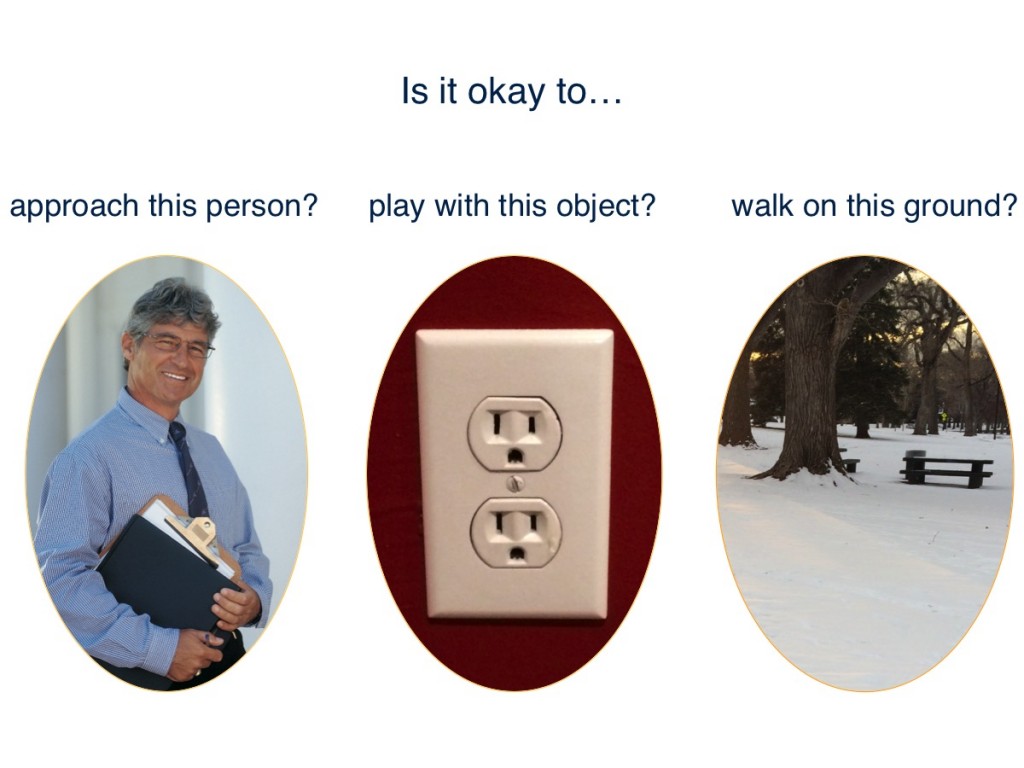
Social referencing is a great tool for children. It allows them to gain knowledge about people, places and objects by watching how other people respond emotionally to them. A child can look to a trusted caregiver to learn whether it’s okay to approach a person, handle a new object such as an electrical outlet, or venture someplace new, like taking a step onto snow. Social referencing helps children learn in situations of both uncertainty and interest.
Social referencing is an important milestone in children’s social-emotional development. Children are beginning to view other people as sources of knowledge. In social referencing, children actively seek information from a social partner to guide their behavior, thoughts and emotions. But social referencing is not the only way for infants to gain information. Sometimes, children are just bystanders watching other people express their emotions.
-
- Dyadic interaction
- a back-and-forth exchange between caregiver and child
- Self-regulation
- the ability to control our behaviors, emotions, and impulses
- Social emotional development
- learning to express and manage emotions and form positive relationships
- Social referencing
- looking to an adult for emotional information in an uncertain situation
- Triadic interaction
- a back-and-forth exchange between caregiver, child, and object